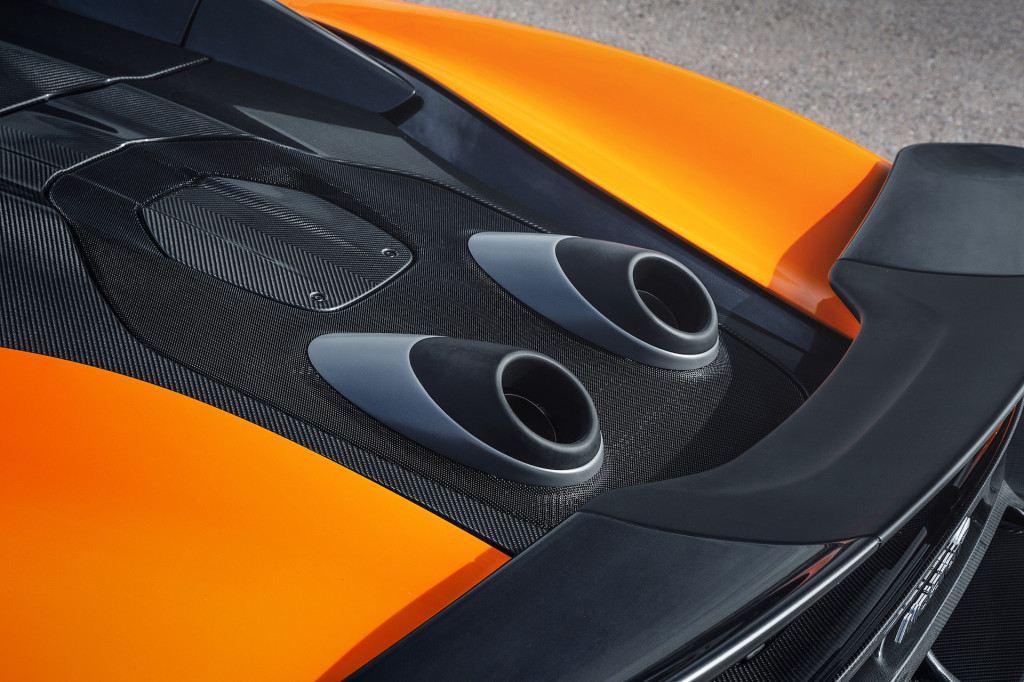McLaren's top-mount exhaust pipes on the 600LT certainly look cool, but there are actually multiple reasons why the British marque opted for the design.
Jason Fenske of Engineering Explained had the opportunity to speak with the 600LT's chief engineer, and he answered numerous questions about the design, how it functions, and how it interacts with the rest of the car's design. To start, weight is a major benefit to the design.
For example, Jason compares the 570S's more traditional exhaust system to the 600LT. In the 570S, the exhaust comes out of each side of the V-8 engine, travels over the transmission housing, and back down before splitting and exiting at the rear. In the 600LT, it's a fraction of the piping. The exhaust cuts off right after it routes over the transmission housing. The design helps reduce exhaust back pressure and shaves about 28 pounds off of the car's weight compared to the 570S.

2020 McLaren 600LT Spider
Next up, aerodynamics. Jason calls aero the biggest advantage to the top-mount exhaust. Unlike the 570S, which has a rear-exit exhaust built into the rear diffusor, the 600LT's top-mount design doesn't interfere with the rear diffusor's design. Thus, the 600LT's diffusor (in combination with its extended length) provides about 220 additional pounds of downforce at high speeds. What about the rear wing? Surely the top-mount exhaust hurts downforce by interfering with the wing.
Actually, no. Jason explains the center of the wing doesn't do much work at all. Instead, the sides of the wing are what receive fresh air to create downforce, which is channeled from the car's body shape. The center of the wing, in comparison, receives more turbulent airflow since it comes off of the roofline. The exhaust dumps air into the portion of the wing that doesn't do much work at all and creates insignificant effects. The wing is also coated in Ceracoat ceramic material for protection from the exhaust's heat.

2020 McLaren 600LT Spider
Rain is also no match for the design. The exhaust features holes for water to drain from the exhaust so the system doesn't become filled with water if the car is left out during a thunderstorm.
Aside from all the engineering benefits, there's one more: it sounds better. With the exhaust right behind a driver's head, more of the noise makes its way to his or her ears. With a 3.8-liter twin-turbo V-8 providing the soundtrack, that's not a bad thing.